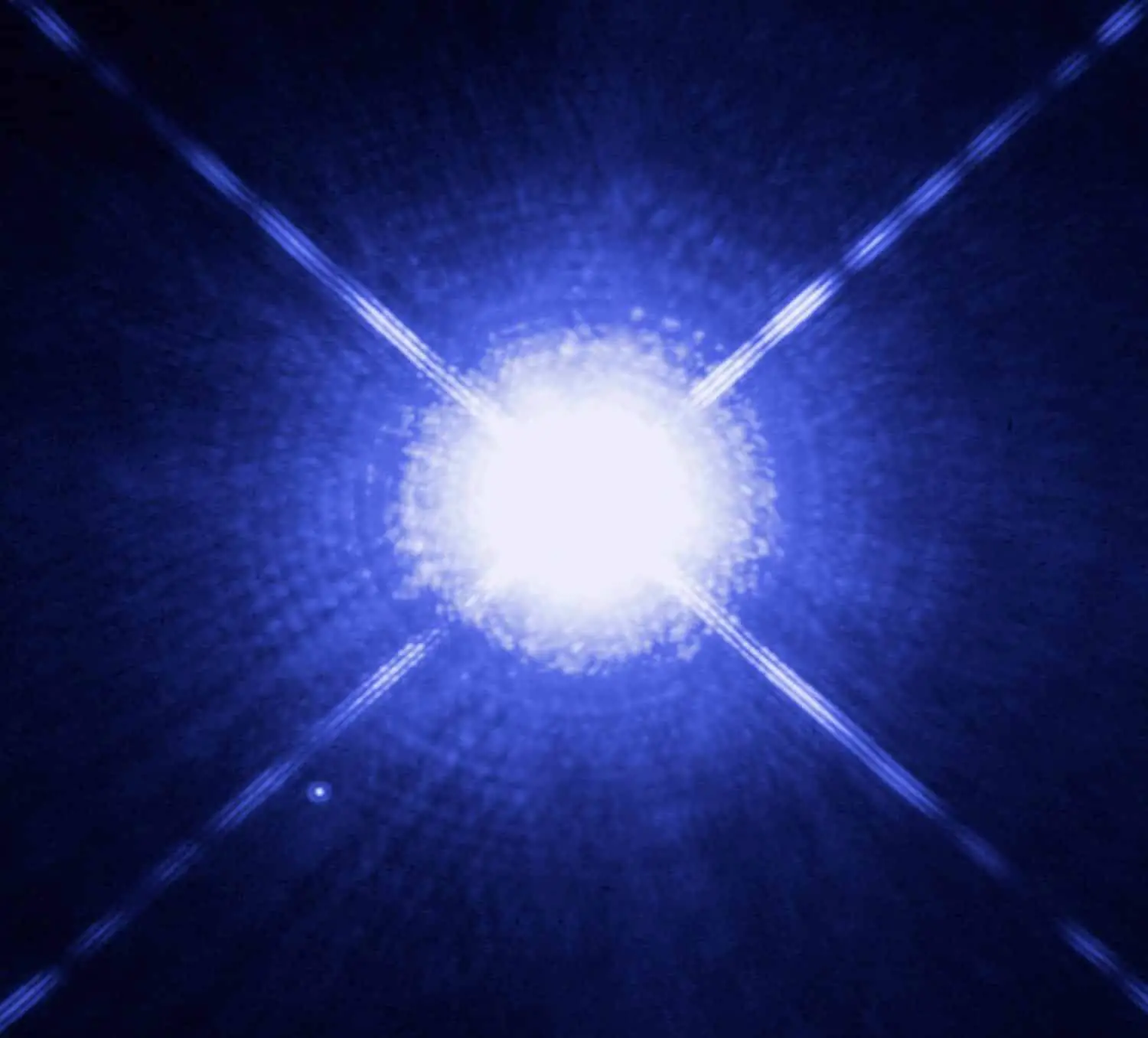One of nature’s most fundamental laws is that ” whatever is born must die at some point”. Simply speaking, when things come into the hand of nature, it treats everything equally.
Whether it is you, me, or the smallest thing at Planck’s length, or even the grandest design of all i.e Universe – I mean everything has to die one day.
I just had a blunderous thought – What about gods? Do Gods die? Well, in my view, Nope…!!! I mean how can a god die? If he was never born…..!!!!
So from the above thought provocation, I can summarise that “whatever is born must die at some point”. And, as a result, so do our stars too.
Here, in this article – the thing I want to discuss with you today is, that we know that the stars die too. But my curiosity asks me how will they die? I mean, after the death of a star, will it become a neutron star, or maybe a black hole, or even planetary nebula or a white dwarf.
I will explain each and everything in a systematic way so that you would understand it easily, rather than memorizing it. Sit, relax, and just go with the flow.
Journey of a Star to a White Dwarf
Here we go on the journey of a star to a white dwarf. Let’s dive right in.
- Gravitational Collapse of a stellar object
- Formation of a star
- Formation of a white dwarf
- Classification of a white dwarf
- The fate of our Sun
- The fate of a white dwarf
Gravitational Collapse Of A stellar Object
In order to get a clear picture of a white dwarf, the first, and foremost important thing is to understand the process of gravitational collapse.
According to the physical laws of the universe, anything can either expand or contract or even stay at equilibrium. Gravitational collapse is a contraction type of phenomenon.
When a stellar object contracts or collapses due to its own gravity – known as the gravitational collapse of a stellar object. As per cosmologists, gravitational collapse is the fundamental mechanism for the structural formation of the universe.
The most important characteristic of gravitational collapse is that the cause of the gravitational collapse could vary accordingly depending upon the type of stellar object.
On the other hand, the fundamental fact never changes that it occurs just because of the inability of a stellar object to withstand its own gravity, hence it collapses.
Editor’s Choice: Astronomers Detect Black Hole and Neutron Star merger: First of its Kind
Formation Of A Star
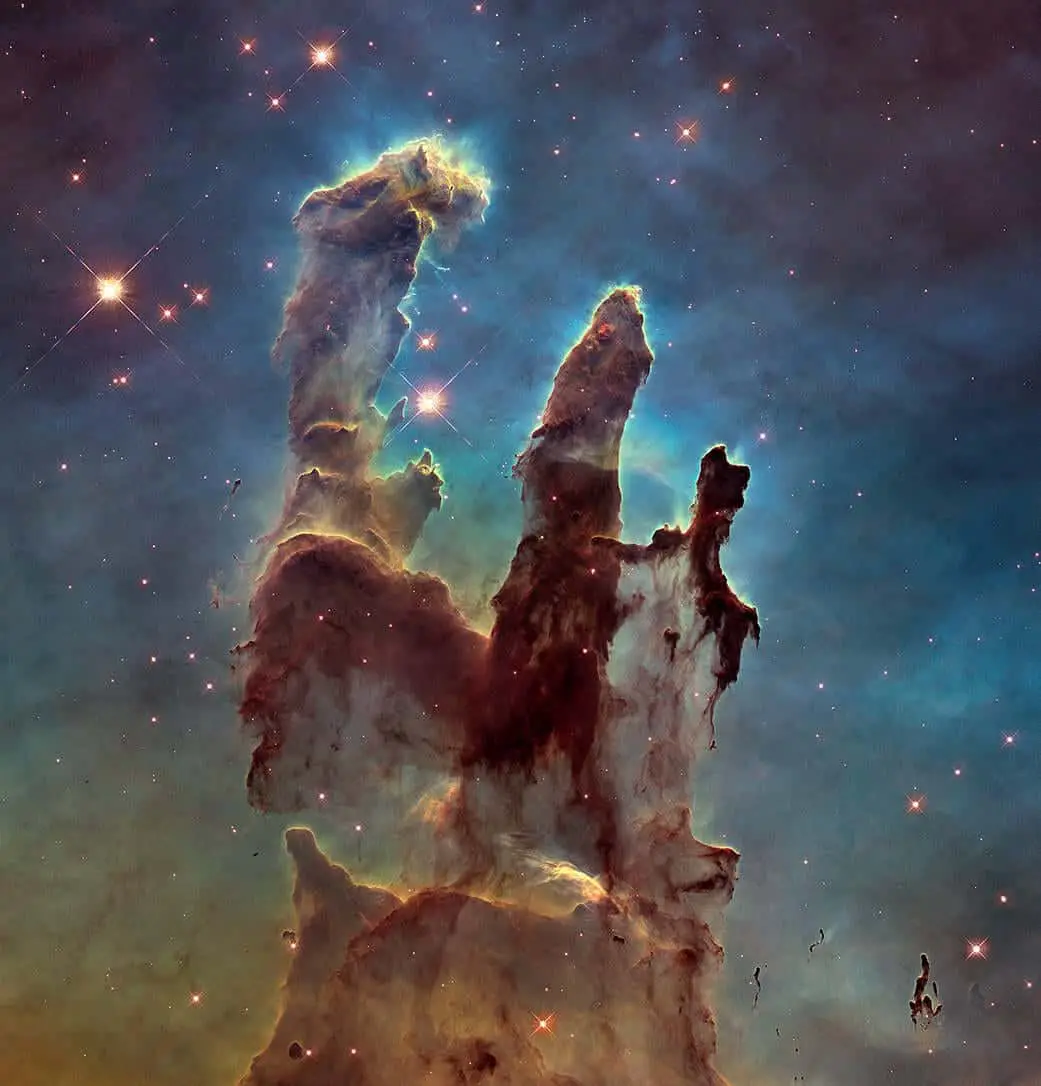
Ok, Suppose you have an interstellar gas cloud that is at perfect equilibrium – meaning the kinetic energy of the gas (pressure) is in perfect balance with the internal gravitational potential energy. Here comes the catch.
The interstellar cloud will remain in equilibrium until or unless the pressure of gas becomes impotent to balance the gravitational potential energy. Hence, the gas cloud collapses under its own gravity.
It will continue to collapse until the time when the new equilibrium position i.e the outward thermal pressure is in perfect balance with the internal gravitational potential energy.
And at this newly attained equilibrium – a star is born. In a similar fashion, a white dwarf is formed. Let’s see how.
Formation Of A White Dwarf
The formation of a white dwarf is regarded as one of the most mysterious cosmological events to study. Well, just to make sure that you don’t get confused, let me clear some facts.
Fact number one – I am explaining things here in descending order. Fact number two – as I will go ahead, the mass of a stellar object will increase. I know you are curious to know things. Just be patient. You will see how.
So, you have seen in the above section that a giant interstellar gas cluster collapsed to form a star (you know the obvious reasons behind it).
Now, the same newly-formed star grows old (it’s just a hypothetical thought because for a star to grow old will take more than the age of the universe).
As the old wrinkled star runs out of its nuclear fuel, the equilibrium state attained by the star previously will no longer hold.
Therefore, it will finally collapse under its own gravity. The collapsing star will continue to collapse until the time it will again achieve some kind of equilibrium position.
In the case of a white dwarf, the state of equilibrium will be achieved by the pressure of the electron, i.e the electron degeneracy pressure will be in perfect balance with the internal gravitational potential energy.
And at this newly attained equilibrium – a white dwarf is born. For this reason, a white dwarf is also known as a degenerate dwarf.
A White Dwarf is Born
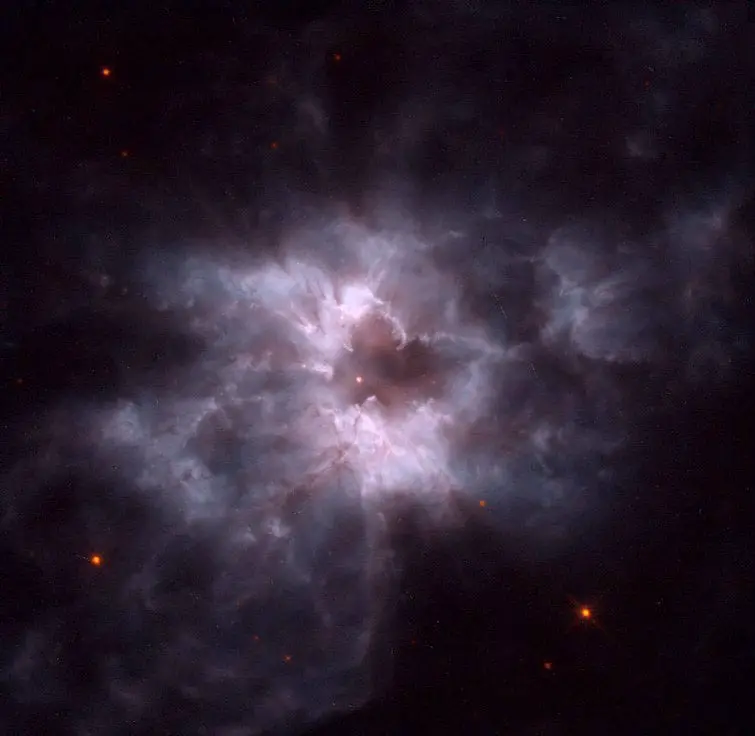
For a star to be reborn as a white dwarf, its mass should be in the range of 0.07 to 10.0 solar masses.
This newly born white dwarf, from the corpse of an old star, has an upper mass limit i.e 1.4 solar masses, above that its electron degeneracy pressure won’t be able to balance the internal gravitational potential.
This mass limiting formula for white dwarfs was calculated by an Indian astrophysicist Subramanyam Chandrasekhar, hence called the Chandrasekhar limit.
Pay attention here. As I said above that if the newly formed stellar core has a mass above the Chandrasekhar limit i.e 1.4 solar masses, the equilibrium state attained previously will no longer hold.
And, it will eventually collapse to form a neutron star. How in neutron star equilibrium state is achieved is a wide topic to discuss. You can check this article to get a clear picture.
For a star to be reborn as a neutron star, its mass should be in the range of 10.0 to 29.0 solar masses, above that mass, a star will become a black hole. (You can check this article to understand the formation and classification of black holes in detail).
I hope that now you would have understood by the fact that what I meant by descending order (interstellar gas cloud>star>white drarf>neutron star>black hole) and increase in mass (interstellar gas cloud<star<white dwarf<neutron star<black holes).
Classification Of A White Dwarf
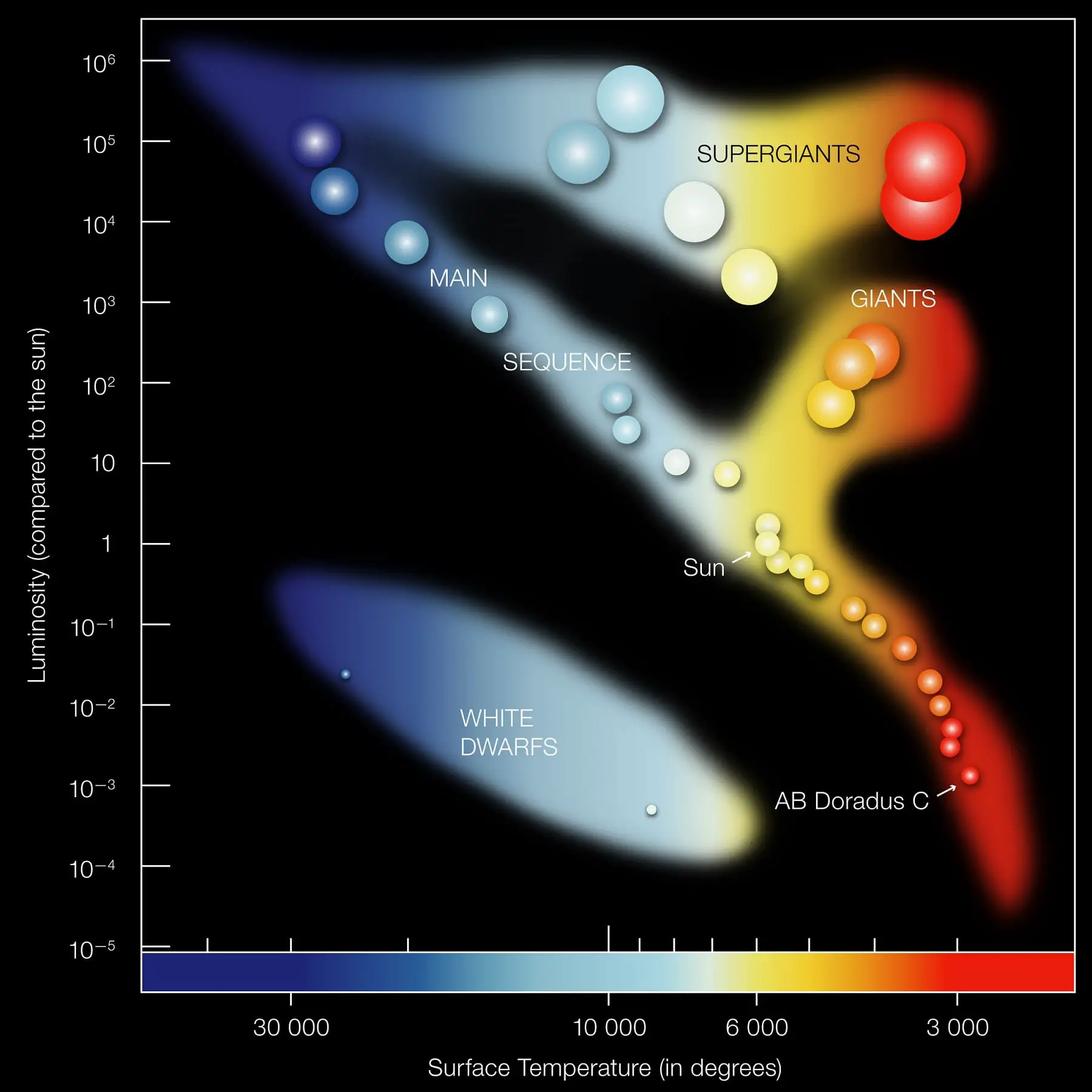
At this very moment, you know what is a white dwarf, how they are formed, what is Chandrasekhar’s limit. And, more importantly, now you know that for a star to be reborn as a white dwarf, its mass should be in the range of 0.07 to 10.0 solar masses.
In my view, this is quite a big number. In order to make things easy for you, I think I should bifurcate it into three-part. Before that, let me tell you some important characteristics of a star, that will help to form a base for the classification of a White Dwarf.
Life Of A Star

As I said in the above section of the formation of a star – when the interstellar gas cloud or nebula gravitationally collapses and a star is born. As a result, its core becomes hot enough to sustain a continuous nuclear fusion reaction until its nuclear fuel is exhausted.
You would be surprised to know that in order to start a nuclear fusion reaction, the star’s core temperature has to reach around 15 million kelvin. (MIND-BLOWN). Then and only then, the fusion of hydrogen into helium could be triggered.
That’s why this process of nuclear fusion at the center of a star is described as the main sequence. In fact, stars spend most of their lifetime fusing hydrogen into helium, hence, a true star is also called the main sequence star.
Heavier the star, the shorter the life it has. The life of a star depends on its mass as well as its temperature. Well, truly it’s just mass, though temperature also plays its role. Finally, I have reached a point where I can say that the journey of a star to a white dwarf starts. Let’s find out.
Small Sized Star
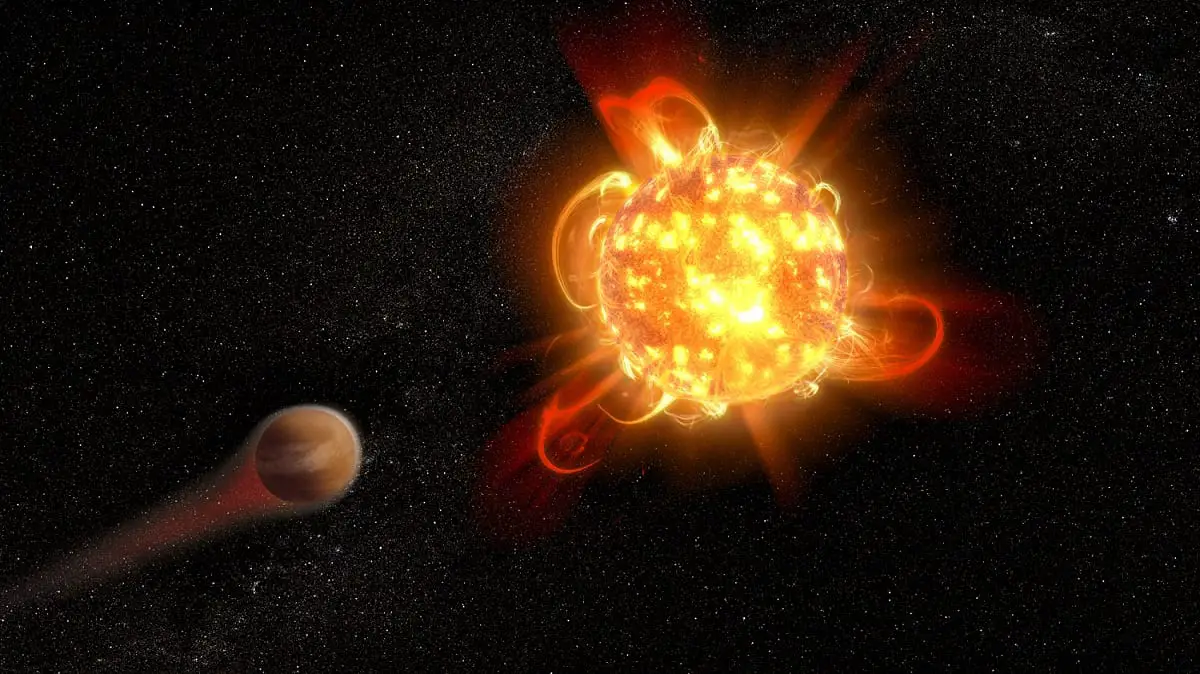
It’s quite funny to think that I am just about to categorize stars into three subdivisions like a clothing line – small, medium, large, etc. Ughh, here I go again, drifting away from the topic. I really can’t control my mind, Well who can?
Anyhow, coming back to the topic of discussion, here I am gifting you a star (of course a hypothetical one). If I say that your star is a small-sized star i.e its mass is between 0.07 to 0.5 solar mass.
Ahh, let me clear one more thing here, the lighter the star, the lower will be the temperature of its core. As you have a small-sized star, therefore, its core will only get hot enough to fuse hydrogen into helium.
In other words, when a small-sized star runs out of its hydrogen fuel; because of its low temperature, helium won’t be able to fuse with carbon and oxygen.
Hence, it will eventually collapse to form a helium white dwarf – purely made up of Helium-4 nuclei. A helium white dwarf comes in the category of M class of stars or simply speaking red dwarfs.
Red dwarf stars are the longest living star because as I have mentioned above; the heavier the star, the shorter the life it has. On the contrary, the lighter the star, the longer the life it has.
Medium Sized Star
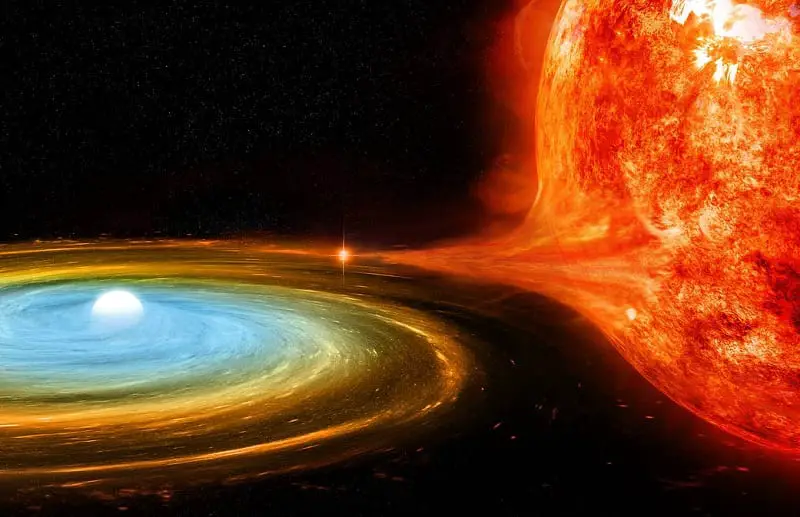
Are you ready?? Are you ready because I am about to gift you a medium-sized star now? See, every star is a main-sequence star, therefore, the fusion of hydrogen into helium will take place in every star.
So, now you have a medium-sized star i.e its mass is between 0.5 to 8.0 solar masses. Therefore, the core temperature is hot enough to fuse helium into carbon and oxygen.
In more simple terms, at first, medium-sized stars will fuse hydrogen into helium. When its core runs out of hydrogen, it will start to fuse helium into carbon and oxygen (this process can’t be seen in small-sized stars).
The astronomical term of the process of hydrogen fusing into helium and then helium into carbon and oxygen is known as the Triple-alpha process.
When a medium-sized star will run out of its helium fuel; carbon and oxygen won’t be able to fuse with heavier elements like neon or magnesium (temperature is not favorable).
Therefore, as a result, the outer hydrogen and helium layer will burst away to form a Planetary nebula. And, what is left behind after the death of a star is a core purely made up of carbon and oxygen i.e A White Dwarf.
Large Sized Star
I think you know what I am about to say. Yup. You are right….!!!! Now I am about to gift a large-sized star. Now you have a large-sized star i.e its mass is between 8.0 to 10.0 solar masses.
Therefore, the core temperature will be hot enough to even fuse carbon into heavier elements like neon, magnesium, or iron, etc. In other words, at first, large-sized stars will fuse hydrogen into helium, then helium into carbon.
When finally its stellar core runs out of helium, it will eventually start to fuse carbon into neon then neon into magnesium, and so on. This process can’t be seen in small as well as medium-sized stars.
Well, the cosmological fate of these kinds of stars is still unresolved. The future large-sized stars are eventually decided by the upper mass limit formula of the White Dwarfs i.e The Chandrashekar Limit. Let’s see how…..!!!!!
Case 1
When the mass of the remnant star or the corpse of a star is lower than the Chandrasekhar Limit i.e 1.4 solar masses, the electron degeneracy pressure of the newly formed white dwarf (purely composed of heavy elements like neon and magnesium) will perfectly balance the internal gravitational potential energy of the stellar core.
Hence, the core won’t collapse further and it will stay as a neon magnesium white dwarf.
Case 2
When the mass of the remnant star or the corpse of a star is higher than the Chandrasekhar limit i.e 1.4 solar masses; at this point, the electron degeneracy pressure of the newly formed stellar core (purely composed of heavy elements like neon and magnesium) will become impotent to balance the internal gravitational potential energy of the stellar core.
Hence, as a result, it will further gravitationally collapse under its own weight causing a supernova. What left behind after the supernova could be a remnant neutron star or even could be a black hole; of course, providing what was the favorable condition.
The fate of Our Sun
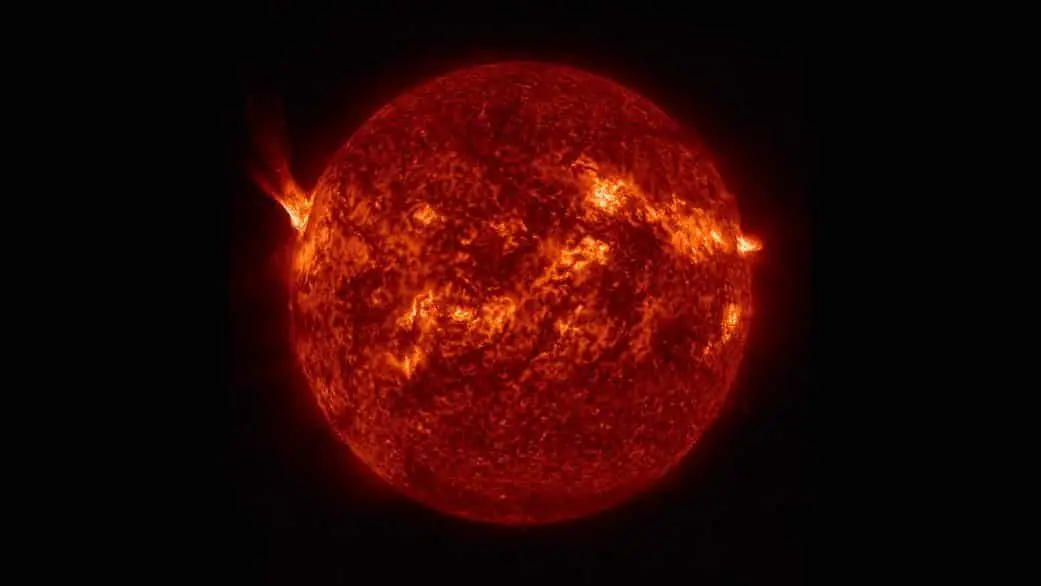
At this very point, now you know that what is a white dwarf, the formation of a white dwarf, what is Chandrasekhar’s limit, the life of a star, and most importantly, the classification of white dwarfs based on its mass and yes its temperature too.
Now you could be wondering what would be the fate of our sun? What will happen when the sun dies? I mean, one day even the sun will die too..!! So, what will happen to the only star of the solar system?
Will the sun become a black hole? Or, will the sun become a neutron star? Or, simply speaking, will the sun become a white dwarf? Let’s find out…!!!!
Our Sun Will Become a White Dwarf
Well, I don’t need to clarify the fact that what will be the fate of our sun. I have already explained it all above in the classification section of a white dwarf.
Yup, you are right….!!! Our sun comes in the category of medium-sized stars i.e from 0.5 to 8.0 solar masses. Our very own sun’s mass is 1 solar mass. I think I have lost my mind. Like seriously, I mean, everybody knows that the definition of a solar mass came from our own sun.
Currently, our sun comes in the category of a main-sequence star – meaning hydrogen is fusing with helium in our sun’s core. When the sun’s core will run out of hydrogen fuel it will start to fuse helium into carbon and oxygen.
But, when the helium exhausts too from the sun’s core, it won’t be able to support the fusion of carbon into heavier elements simply because the core’s internal temperature is not sufficient enough.
Therefore, as a result, the sun won’t ever become a neutron star or a black hole but when the time comes it will eventually become a white dwarf.
But you don’t need to worry about that, it will take billions of years for the sun to run out of its fuel and eventually collapse and giving birth to a dwarf star.
The fate of a White Dwarf
Now I would like to discuss with you the ultimate fate of a white dwarf…!!! Well, frankly speaking, till today, we don’t know anything for sure.
I mean, because we haven’t seen any white dwarf dying because for a white dwarf to die or completely cool down, it would take time more than the age of the universe.
In order to make things more interesting let’s bifurcate the fate of a white dwarf into two.
Case 1
Can I gift you something again? Please….!!!! So, now you have a white dwarf. As from above all the explanations, it is clear that a white dwarf is nothing but a corpse of a dead star.
So as a result, there won’t be any nuclear activity going on inside its core. But due to the gravitational collapse of a star or the death of a star, the newly formed white dwarf had a drastic increase in its temperature.
Now it is cooling down slowly and slowly. But, suppose it got lucky, like I mean, in the distant future, it runs into another stellar corpse, or maybe it would collide with another red dwarf/white dwarf.
If that happens, there would be the slightest chance of probability that its dead cooling core will again ignite itself and nuclear fusion would be triggered, and once again it would become a main-sequence star.
Case 2
Well, case 2 is quite simple and straightforward. The dead cooling core does not meet any new companion on his way.
As time passes by, it will cool down completely by radiating the heat and light from its surface and finally will meet its ultimate fate i.e it will become a black dwarf.
Note that, a black dwarf is just a hypothetical stellar object. I mean till today, astronomers haven’t seen or discovered any black dwarf in our universe.
One of the arguments says that a white dwarf would take more than the age of the universe to completely cool down and become a black dwarf.
So that’s why it is impossible to observe a black dwarf in our own universe. But who knows, maybe in the near coming future we could find a new way to observe a black dwarf too.
What do you think? Will we be able to see a glimpse of a black dwarf too? Is it possible or just a hypothesis of some crazy physicists? I am waiting for your curious comment. Feel free to enlighten me. And, forgive me for giving you hypothetical Gifts so many times.
That’s it for this post. If you like this article, share it if you like it, like it if you share it. You can also find us on Mix, Twitter, Pinterest, and Facebook. Hey man, If you have come this far, do give us feedback in the comment section. It would make my day. Cheers!!!
